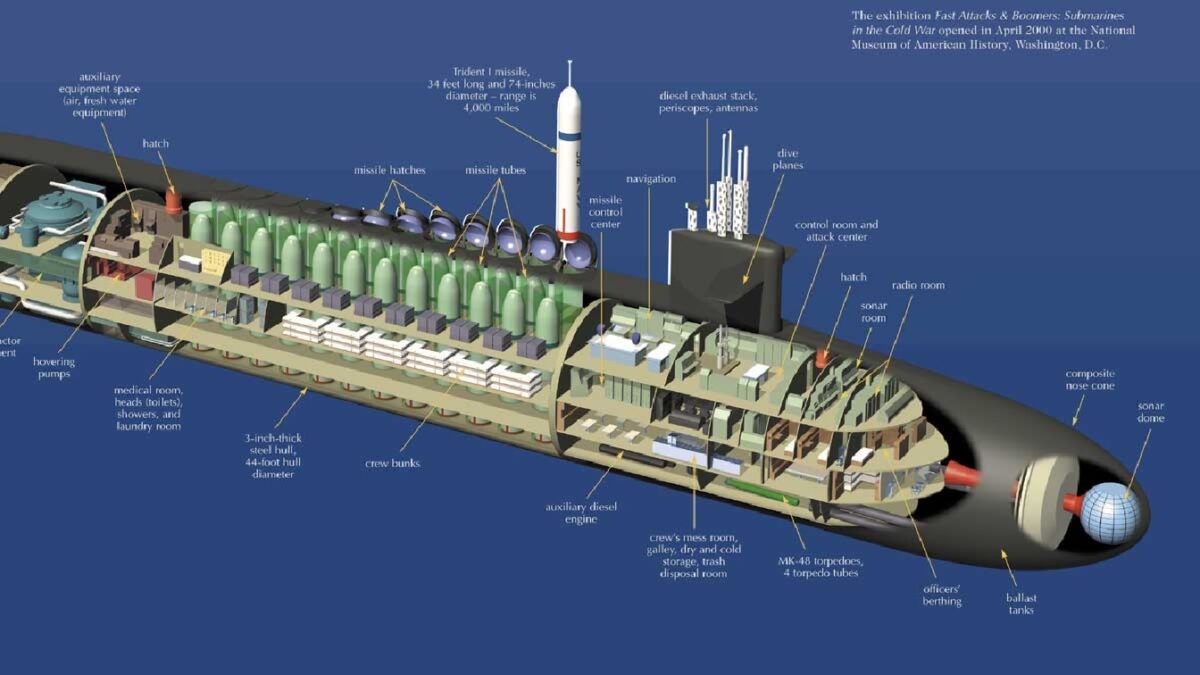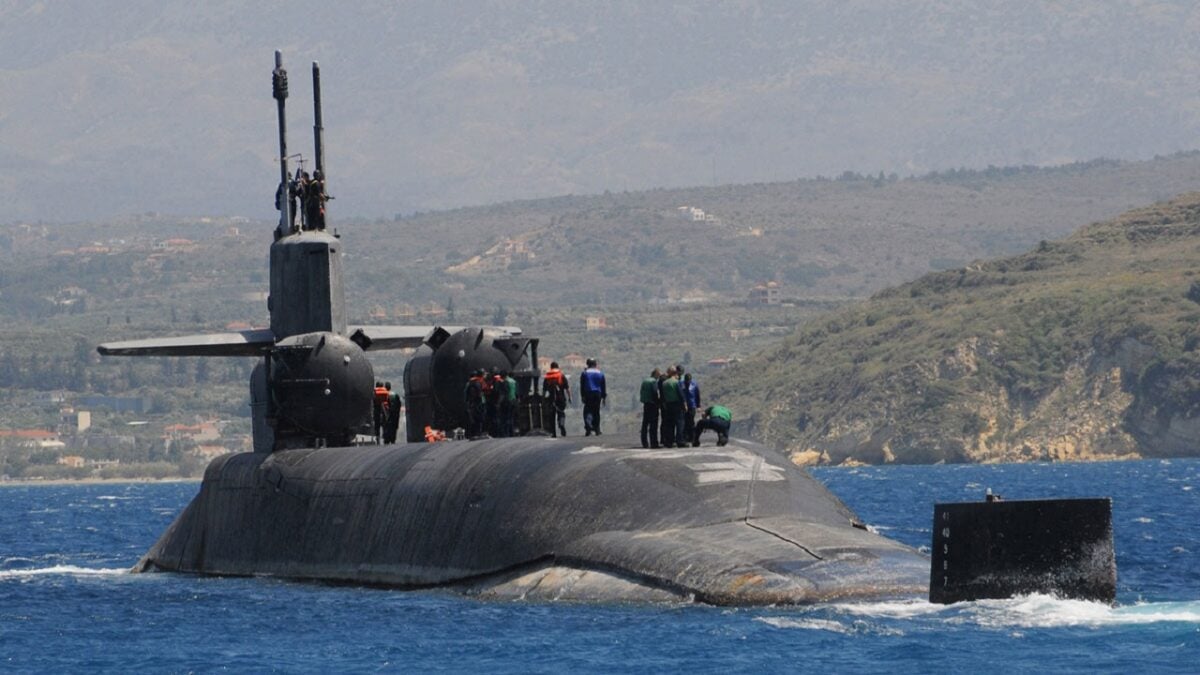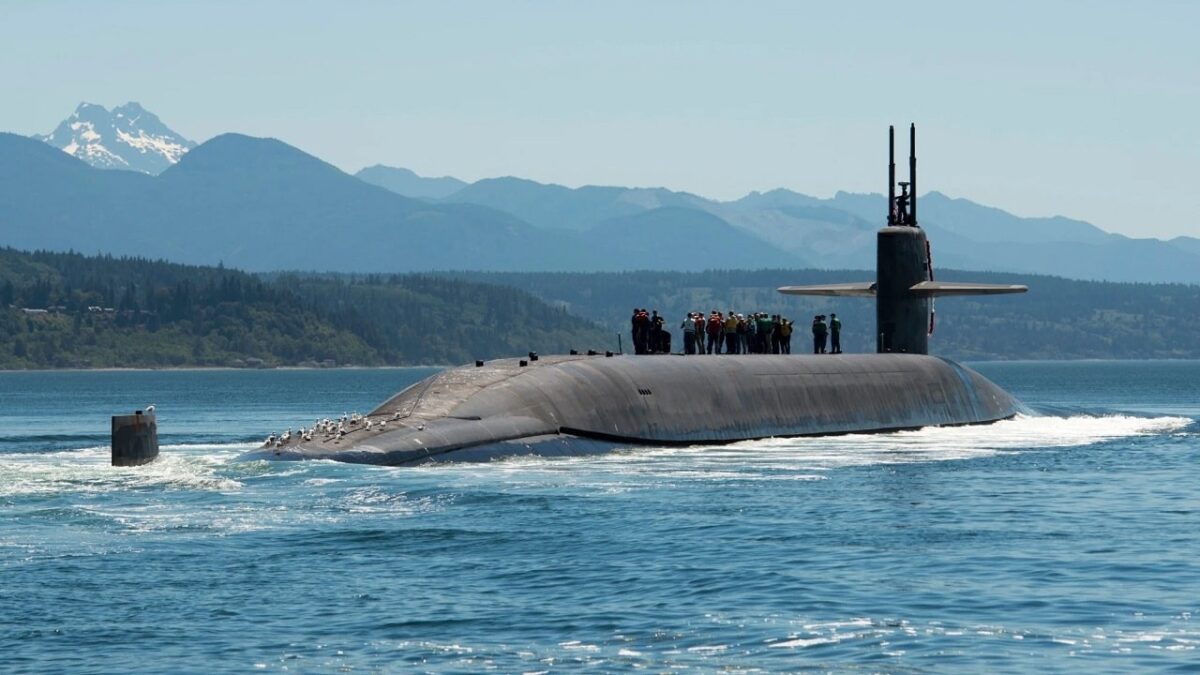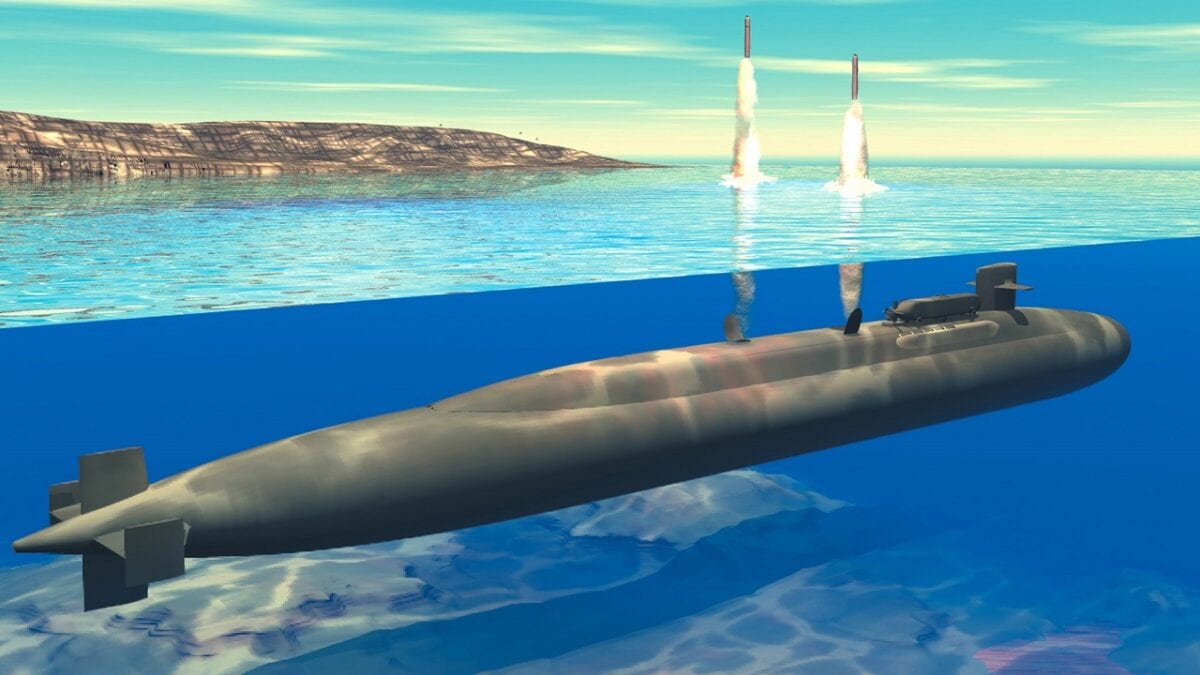A few years back, the U.S. Navy began to look into how it could extend the service lives of its Ohio-class ballistic missile submarines beyond the now forty-two-year planned life of the SSBNs.
(Subscribe to Our YouTube Channel Here. 19FortyFive publishes original videos every day.)
This could be necessary to ensure that that the Navy will be able to maintain its submarine force as the replacement Columbia-class SSBNs enter service.
That these subs can serve this long – and still be massively destructive – speaks to the legacy of the Ohio-class.
Ohio-Class: A History
Designed in the 1970s, the Ohio-class are the largest submarines ever built for the U.S. Navy, and only the Russian Navy’s Soviet-design Typhoon-class and Borei-class are larger. However, despite a smaller size than the Soviet/Russian boats, the Ohio-class subs were developed to carry twenty-four Trident II missiles – compared to the twenty missiles carried by the Typhoon-class and just sixteen by the original Borei class.
Throughout their service, the Ohio-class SSBNs have been a key component of the United States “nuclear-deterrent triad” and currently, the fourteen operational subs carry half of the nation’s active strategic thermonuclear warheads.
A total of eighteen Ohio-class boats were constructed between 1981 and 1997 by the Groton, Connecticut-based Electric Boat Division of General Dynamics. The U.S. Navy’s submarines of the Pacific Fleet are currently based at Bangor, Washington, while those of the Atlantic Fleet are based at King’s Bay, Georgia. During deployment, the submarines spend approximately seventy days at sea followed by twenty-five days in the dock for overhaul. Each of the SSBNs spends at least sixty-six percent of the time at sea.
To reduce the time in port for crew turnover and replenishment the submarines were built with three large logistics hatches – and these provide large diameter supply and repair openings. The hatches allow the sailors to rapidly transfer supply pallets, equipment replacement modules, and other machinery components quickly. The SSBNs were also developed to operate for fifteen years or longer between overhauls.
Each SSBN has two crews – Blue and Gold, which alternate manning the boats while on patrol. The crew consists of fifteen officers and one hundred forty four enlisted sailors. This further maximizes the SSBN’s strategic availability, while reducing the number of boats that are required to meet the strategic requirements and yet allow for proper crew training, readiness and morale.
The Tech
The Ohio-class subs are powered by a pressurized water reactor (PWR), which drives the steam turbines to a single propeller shaft. The boats can attain depths in excess of eight hundred feet at speeds in excess of twenty-five knots.
Each of the submarines can carry the aforementioned twenty-four ballistic missiles with multiple independently targetable reentry vehicle (MIRV) warheads that can be accurately delivered to selected targets from almost anywhere in the world’s oceans.

Ohio-Class SSBN. Image Credit: U.S. Government.

Ohio-Class SSGN. Image Credit: U.S. Navy.

Ohio-Class. Image Credit: U.S. Navy.

Artist’s concept of an Ohio-class SSGN launching Tomahawk Land Attack Missiles.
In accordance with the Strategic Arms Reduction Treaty (START II), which was agreed in June 1992, the number of U.S. Navy strategic missile submarines was limited to fourteen beginning in 2002. Four of the boats of the Ohio-class were converted to conventionally-armed nuclear-powered (SSGNs) submarines.
MORE: Why Putin Fears the M1 Abrams Tank
MORE: I Went to War in the Leopard 2 Tank Ukraine Wants
MORE: World War III – Where Could It Start?
MORE: A U.S.-China War Over Taiwan Would Be Bloody
Expert Biography: A Senior Editor for 1945, Peter Suciu is a Michigan-based writer who has contributed to more than four dozen magazines, newspapers, and websites with over 3,000 published pieces over a twenty-year career in journalism. He regularly writes about military hardware, firearms history, cybersecurity, and international affairs. Peter is also a Contributing Writer for Forbes.

